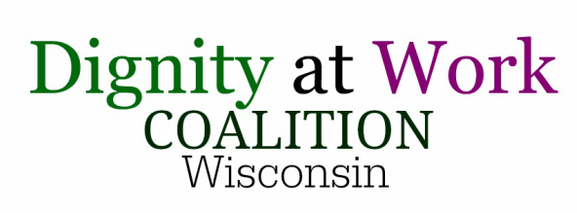Fair Pay
The Issue
The current minimum wage in Wisconsin is $7.25 per hour. The federal minimum wage is also $7.25 per hour, but it has not been adequately adjusted to keep up with the rising costs of living due to inflation. To put in perspective how far the minimum wage has fallen behind the real costs of living, the inflation-adjusted value of the federal minimum wage in 2014 was 24 percent below its value in 1968.
|
Wisconsin law prohibits local units of government from enacting an ordinance that establishes a general minimum or “living” wage that is different than state law. However, there are exceptions to this prohibition for living wage ordinances that apply to local government employees or employees paid under contracts with local governments. Several Wisconsin counties and cities have enacted such ordinances.
Raising the minimum wage would benefit more than just the workers who would see a direct raise from the increase. Other low-wage workers who make slightly more than the amount to which the minimum wage is raised would also benefit from the positive “ripple effect” of raising the wage floor. |
What Wisconsin Can Do
Despite Congress’ continued failure to raise the minimum wage, several states have enacted minimum wage increases in recent years. New York, Washington D.C. , and California have all enacted $15 per hour minimum wages that will gradually go into effect in 2018, 2020, and 2023 respectively. Oregon passed a minimum wage increase the will vary by region and will be fully implemented in 2023, after which minimum wage increases will be indexed to inflation. Twenty-nine states have a higher minimum wage than the federal minimum wage and 11 states index their minimum wages to inflation. Wisconsin is not among these states, which makes raising our state minimum wage even more critical for lower-wage workers.
Three separate pieces of legislation that would raise Wisconsin’s minimum wage were introduced during the 2015-2016 legislative session. These proposals would have raised Wisconsin’s minimum wage to between$10.10 per hour and $15 per hour. All three of the bills would have also increased the minimum wage for tipped employees (who are only required to receive $2.13 per hour in direct wages if that amount combined with the tips received at least equals the federal minimum wage), but took very different approaches to doing so. For more information on each proposal, please see the more detailed issue brief on raising the minimum wage contained in the compendium to this report.
Effective and exciting advocacy for raising the minimum wage is also taking place in our communities. Organizations like Wisconsin Jobs Now and Fight for $15 have helped organize lower-wage workers and their allies across the state of Wisconsin to participate in rallies and protests urging local units of government to pass living wage ordinances that are allowable under current state law and individual businesses in traditionally low-wage employment sectors to voluntarily raise their employees’ wage.
Three separate pieces of legislation that would raise Wisconsin’s minimum wage were introduced during the 2015-2016 legislative session. These proposals would have raised Wisconsin’s minimum wage to between$10.10 per hour and $15 per hour. All three of the bills would have also increased the minimum wage for tipped employees (who are only required to receive $2.13 per hour in direct wages if that amount combined with the tips received at least equals the federal minimum wage), but took very different approaches to doing so. For more information on each proposal, please see the more detailed issue brief on raising the minimum wage contained in the compendium to this report.
Effective and exciting advocacy for raising the minimum wage is also taking place in our communities. Organizations like Wisconsin Jobs Now and Fight for $15 have helped organize lower-wage workers and their allies across the state of Wisconsin to participate in rallies and protests urging local units of government to pass living wage ordinances that are allowable under current state law and individual businesses in traditionally low-wage employment sectors to voluntarily raise their employees’ wage.
How You Can Help
- Call or email you legislators to urge them to support legislation that would increase the minimum wage.
- Connect to organizations like Wisconsin Jobs Now and Fight for $15 that are already working on increasing the state’s minimum wage and organizing low-wage workers and their allies to urge individual businesses to increase their employees’ wages.
Adapted from http://www.supportwomenshealth.org/

